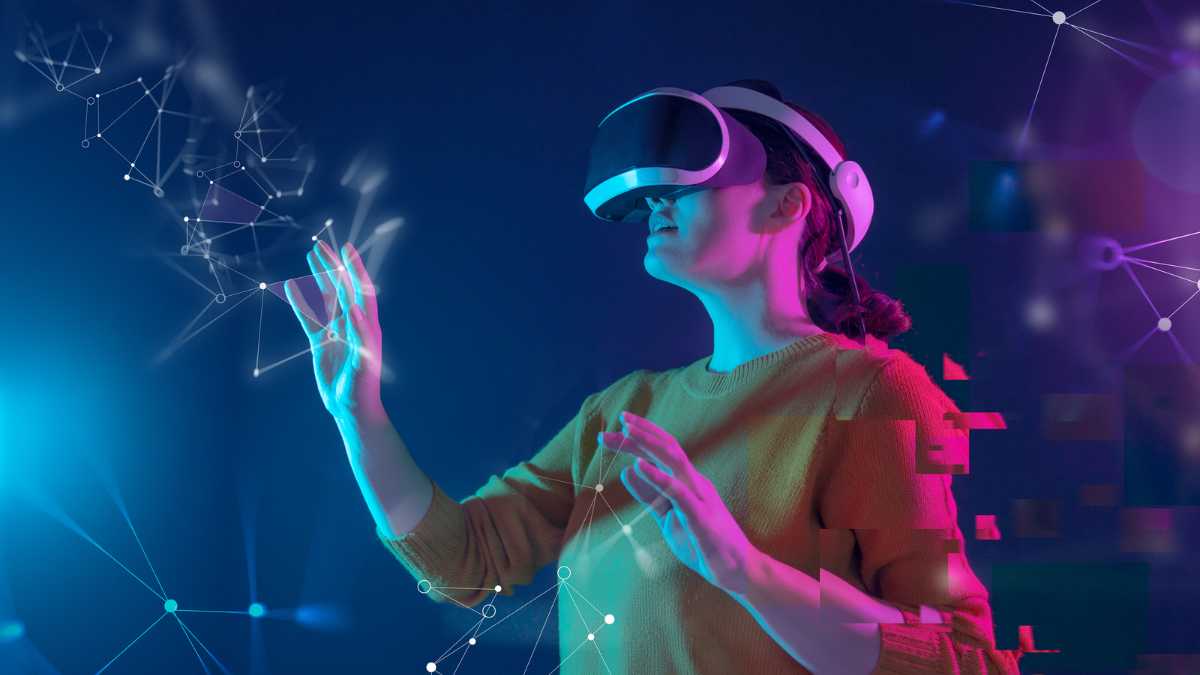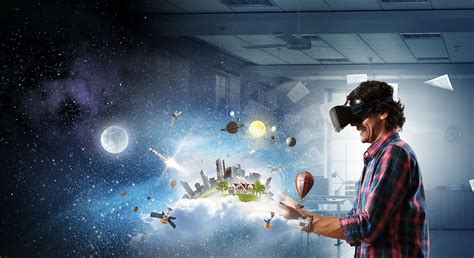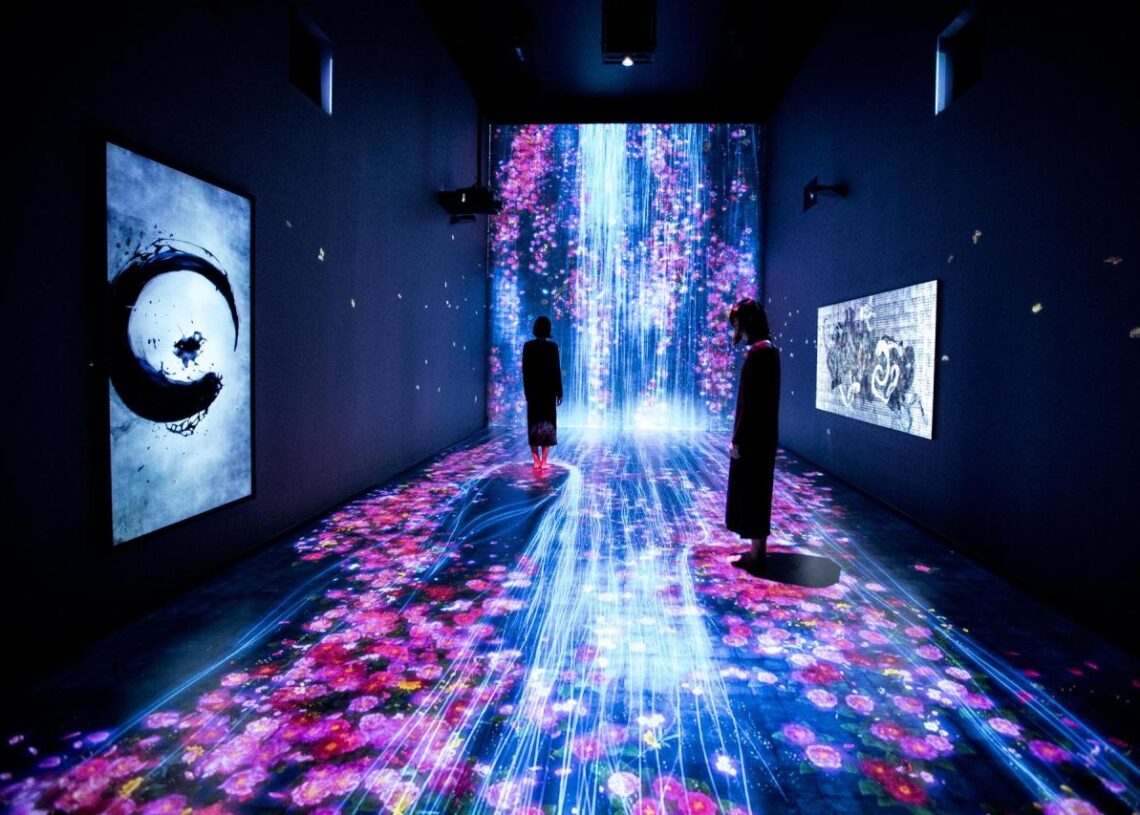For centuries, our interaction with the world has been bound by the unyielding laws of physics. We experience life through a single, physical lens. But a technological earthquake is underway, one that is fundamentally shaking the foundations of reality itself. We are on the cusp of a new computing paradigm, a shift as profound as the invention of the personal computer or the mobile internet. This is the era of immersive realities—a spectrum of technologies that are dissolving the boundary between the physical and digital worlds, promising to redefine the very essence of human experience.
This isn’t a far-flung science fiction prophecy; it’s a revolution happening in real-time. Moving far beyond the initial niche of hardcore gaming, Virtual Reality (VR), Augmented Reality (AR), and Mixed Reality (MR) are now being woven into the fabric of our daily lives. They are changing how we learn, heal, work, shop, and connect with one another. The passive act of viewing information on a flat screen is giving way to the active experience of stepping inside it.
This in-depth article will guide you through this transformative landscape. We will decode the different forms of immersive reality, explore the sophisticated technologies that make them possible, showcase their revolutionary applications across major industries, and look ahead to the ultimate promise of this technology: the creation of a persistent, shared virtual universe known as the metaverse. Prepare to see how the world you know is being irrevocably and excitingly remade.
Decoding the Spectrum of Extended Reality (XR)
The term “immersive reality” is often used as a catch-all, but it encompasses a range of distinct technologies, each with unique capabilities and applications. Together, they form a spectrum known as Extended Reality (XR), which moves from enhancing our physical world to replacing it entirely.
A. Augmented Reality (AR): Enhancing the Physical World Augmented Reality does not transport you to another place; it brings the digital world into yours. AR technologies work by overlaying computer-generated images, sounds, and information onto your view of the real world. The key characteristic of AR is that it supplements reality rather than replacing it.
The most common form of AR is experienced through the smartphone in your pocket. Think of the viral sensation Pokémon GO, where digital creatures appeared in your local park, or an IKEA app that lets you see how a virtual sofa would look in your physical living room. The next frontier for AR is wearable technology, such as smart glasses. These devices aim to provide hands-free, context-aware information directly in your line of sight, from turn-by-turn navigation and message notifications to live language translation. AR’s power lies in its ability to provide relevant digital data without disconnecting the user from their immediate surroundings.
B. Virtual Reality (VR): Replacing the Physical World Virtual Reality sits at the opposite end of the spectrum. It is a fully immersive experience that blocks out the external world and replaces a user’s sensory input with a completely computer-generated one. This is achieved through the use of a head-mounted display (HMD) that fills your field of view with a digital environment. When you turn your head, your view within the virtual world changes accordingly, creating a powerful sense of “presence”—the psychological feeling of actually being there.
VR is a gateway to impossible experiences. You can stand on the surface of Mars, swim with whales in the deep ocean, or wield a sword in a fantasy realm. This total immersion makes it incredibly powerful for applications that require focus, simulation, or pure escapism, such as advanced gaming, therapeutic treatments, and high-fidelity training scenarios.
C. Mixed Reality (MR): Merging Physical and Digital Worlds Mixed Reality, often considered the most advanced and complex of the three, is where the physical and digital worlds truly converge and interact. Unlike AR, which simply overlays information, MR anchors digital objects to the real world and allows them to be manipulated as if they were physically present. An MR headset, like the Microsoft HoloLens, first scans and creates a digital map of your environment. It then allows digital content to understand and interact with the surfaces and objects in that room.
Imagine an engineering team collaborating around a physical table, all wearing MR headsets. They could see and interact with a detailed, full-scale 3D model of a jet engine floating in the center of the room, able to walk around it, “grab” components to inspect them, and see annotations from their remote colleagues in real-time. A surgeon could overlay a patient’s MRI scans directly onto their body during an operation. This seamless blending of realities, where digital objects have permanence and obey the rules of the physical environment, holds the key to transforming professional and industrial workflows.
The Core Technologies Powering True Immersion
The magic of XR is not conjured from thin air. It is the product of a convergence of rapidly advancing hardware and software technologies, all working in concert to trick our senses into accepting a new reality.
A. Visual and Auditory Fidelity The most critical element of immersion is convincing the eyes and ears. Modern headsets are pushing the boundaries of visual technology with:
- High-Resolution Displays: Using OLED and Micro-OLED panels that deliver vibrant colors and deep blacks, with pixel densities high enough to eliminate the “screen door effect” (seeing the gaps between pixels).
- High Refresh Rates: Headsets now support refresh rates of 90Hz to 120Hz and beyond, ensuring smooth motion that is crucial for preventing nausea and enhancing realism.
- Advanced Optics: The bulky Fresnel lenses of early headsets are being replaced by “pancake lenses,” which are thinner and lighter, allowing for smaller, more comfortable HMD designs.
- Spatial Audio: This technology creates a 3D soundscape where sounds appear to come from specific locations in the virtual or mixed environment, dramatically increasing the sense of presence.
B. Tracking, Mapping, and Processing For an immersive experience to feel real, the system must know where you are and how you are moving with near-zero latency.
- Inside-Out Tracking: Modern standalone headsets like the Meta Quest series are equipped with multiple cameras that constantly scan the room. This allows the device to track its own position in 3D space (known as 6 Degrees of Freedom or 6DoF) without any external sensors, giving users the freedom to move around untethered.
- SLAM (Simultaneous Localization and Mapping): This is the sophisticated algorithm that allows MR and AR devices to build a real-time map of an environment while simultaneously tracking their own position within it. This is what enables digital objects to be convincingly “placed” on a real table or floor.
- Onboard Processing and 5G: The computational demands of rendering two separate high-resolution images (one for each eye) are immense. While powerful PCs are still used for high-end VR, mobile processors are becoming incredibly capable. Furthermore, the rollout of 5G and Wi-Fi 6E is a game-changer, enabling high-fidelity experiences to be streamed from the cloud to lightweight glasses, removing the need for bulky onboard hardware.
C. Haptics and Advanced Sensory Feedback True immersion goes beyond sight and sound. Haptics, the technology of touch and sensation, is the next major frontier. Early forms of haptics are common in vibrating game controllers, but the technology is becoming far more sophisticated. Companies are developing haptic vests that simulate impacts, gloves that provide resistance and texture feedback when “touching” a virtual object, and even full-body suits. This feedback loop, where you can not only see but also feel the virtual world, is a critical step toward complete immersion.
The Revolution in Practice: XR Across Every Industry

Immersive technology is already delivering tangible value and radically new capabilities across a vast range of sectors. It is no longer a solution looking for a problem.
A. Healthcare and Medicine XR is transforming medical training, treatment, and practice. Surgeons can now rehearse complex procedures on hyper-realistic virtual patients, allowing them to hone their skills in a zero-risk environment. In therapy, VR is a powerful tool for exposure therapy, helping patients confront and overcome phobias, anxiety, and PTSD in a controlled, safe setting. During live surgeries, AR glasses can overlay a patient’s vital signs, X-rays, and 3D organ models directly into the surgeon’s field of view, providing critical information without them needing to look away at a monitor.
B. Education and Corporate Training The “learn by doing” model is supercharged by XR. History students can walk the streets of ancient Rome, medical students can dissect a human body without a cadaver, and architecture students can step inside their own designs. In the corporate world, companies are using VR to train employees on complex machinery, safety procedures, and customer service scenarios. This method has been shown to improve retention rates, reduce errors, and provide a level of engagement that traditional training manuals or videos simply cannot match.
C. Retail and E-commerce Immersive realities are bridging the gap between online and in-store shopping. AR applications are already mainstream, allowing customers to use their phone to see how a new piece of furniture will look in their home or how a certain shade of makeup will appear on their face. In the future, VR showrooms will allow you to browse for a new car, sit inside it, customize the interior, and take it for a virtual test drive, all from your living room.
D. Engineering, Design, and Manufacturing For industries that build complex products, MR and VR are revolutionary collaboration tools. Automotive designers at companies like Ford and BMW use VR to review and iterate on new vehicle designs at full scale long before a physical prototype is built. On the factory floor, an assembly line worker wearing AR glasses can see step-by-step instructions, schematics, and warnings overlaid directly onto the machinery they are working on, dramatically improving accuracy and efficiency.
The Metaverse: The Ultimate Synthesis of Immersive Reality
The logical endpoint for all of this technological development is the concept that has captured the world’s imagination: the metaverse. The metaverse is envisioned as a persistent, interconnected network of 3D virtual spaces—a future version of the internet that you step inside rather than just look at.
It’s not a single game or app but a universal platform where users, represented by avatars, can socialize, work, create, shop, and play. Your digital assets and identity could, in theory, move seamlessly from one experience to another. While the full realization of this vision is likely decades away, its building blocks are being laid today by companies like Meta (formerly Facebook), which has invested billions in the concept, as well as NVIDIA with its “Omniverse” platform for creating shared virtual worlds, and Epic Games, whose game Fortnite has evolved into a social space that hosts concerts and movie premieres.
Navigating the New Reality

The era of immersive reality is here, and its momentum is unstoppable. While challenges around cost, comfort, and ethical governance remain, the underlying technology is accelerating at a breathtaking pace. We are moving beyond the flat screen and into a future of spatial computing, where information is integrated into our environment and our digital interactions have a sense of physical presence.
This fusion of the physical and digital is creating a world of unprecedented opportunity. It will unlock new forms of creativity, enable deeper human connection across vast distances, and solve complex problems in ways we are only just beginning to imagine. The journey is just beginning, but one thing is clear: these immersive realities are not just changing our experiences; they are fundamentally remaking our world.













